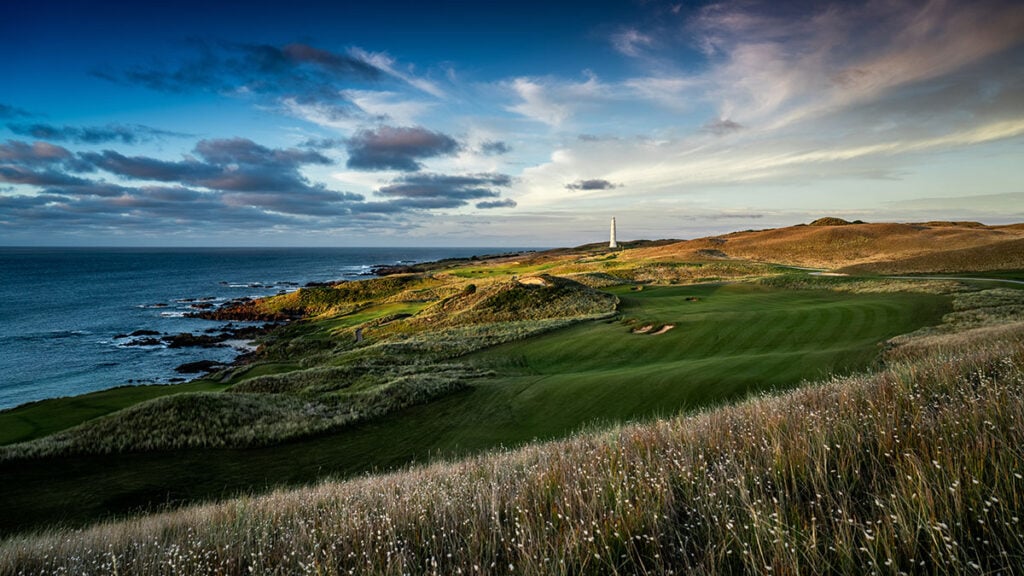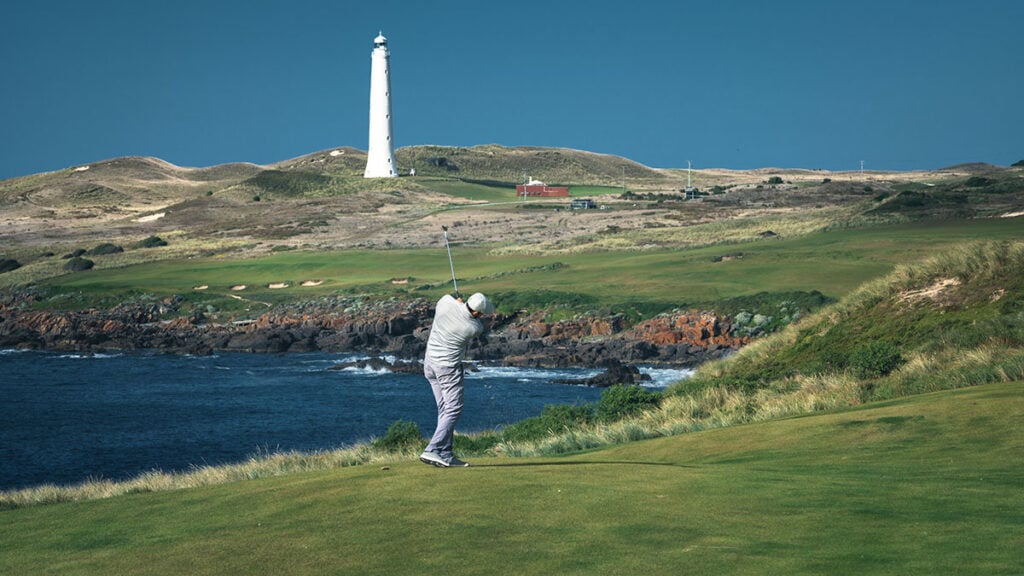WHAT YOU NEED TO KNOW: Cobra’s latest game-improvement iron features a 70-gram steel bar inside the clubhead that allows the L-shaped face insert to bend more at impact. The variable-thickness face is 22-percent larger in its thinnest area than its LTDx predecessor. The irons are also available in the company’s One Length model.
PRICE: Steel $229 (each); graphite $249 (each)
3 COOL THINGS
1. An old idea brought to life
It’s been said there are few new ideas, only execution. But going back to the 1500s for an idea for a golf club? That’s when Leonardo da Vinci had an idea for the first self-supporting bridge. It was never built, but Cobra’s engineers used the genesis of that idea in the company’s latest game-improvement iron, Aerojet.
Called “PWR-Bridge,” the design utilises a 70-gram steel weight inside the body that is completely separated from the face. The bar is welded onto posts and sits slightly above the sole area, allowing for the bottom of the L-shaped face insert that is used up to the 7-iron to flex more at impact. The bar particularly helps maintain ball speed on shots hit out on the toe area—a spot everyday players often find themselves making contact with. “This is a face flexibility story that will continue over several years for us,” said Bryce Hobbs, principal innovation engineer for Cobra.
The weight does more, however, than simply allow the bottom portion of the face to flex more. Because of its substantial heft, and position low within the clubhead, it helps drop the centre-of-gravity position to assist a higher launch—a desirable trait in long and mid irons.

2. A H.O.T. face
Channeling a dude like da Vinci is a flex move, but it’s not the only thing that contributes to enhanced ball speed. Cobra has employed what it refers to as its “PWRShell” face insert in many of its recent irons. This version, however, is a significant leap forward.
Through the use of artificial intelligence, Cobra was able to simulate thousands of impacts across the face. The result was what the company calls H.O.T. (Highly Optimised Topology) face technology. In layman’s terms, there are multiple zones on the 17-4 stainless-steel face with optimised shaping and thicknesses to deliver more efficient speed across a wider portion of the face. To help achieve that, the thinnest part of the face (1.9 millimetres) is 22 per cent larger than its LTDx predecessor. That raises face deflection by 10 per cent, allowing shots to not only receive a distance boost (up to 3.5 yards more in the company’s robot testing), but go higher, too, despite the lofts leaning toward the strong side.

3. A steadfast commitment to One Length irons
When we met with Cobra in October to discuss this iron, the company said it had sold more than 43,000 sets of One Length irons since 2017. So clearly Bryson DeChambeau isn’t the only one using them. Given such numbers, the company continues with its commitment to One Length, where each iron is 7-iron length (37.25 inches).
Cobra has learned some things over time in the development of One Length irons that has manifested itself here, such as creating wider soles in the 4- through 6-irons. This aims to drive the centre of gravity lower to help get shots in the air—something made more difficult by the shorter-than-normal shafts in those clubs. Also helping dial in the proper trajectory is a novel approach to shafts. While the length is consistent, the weights vary as the One Length irons feature KBS Tour 80 shafts in the 4- through 6-irons; KBS Tour 90 in the 7- through 9-iron, and a heavier KBS Tour 120 in the pitching wedge and sand wedge.



